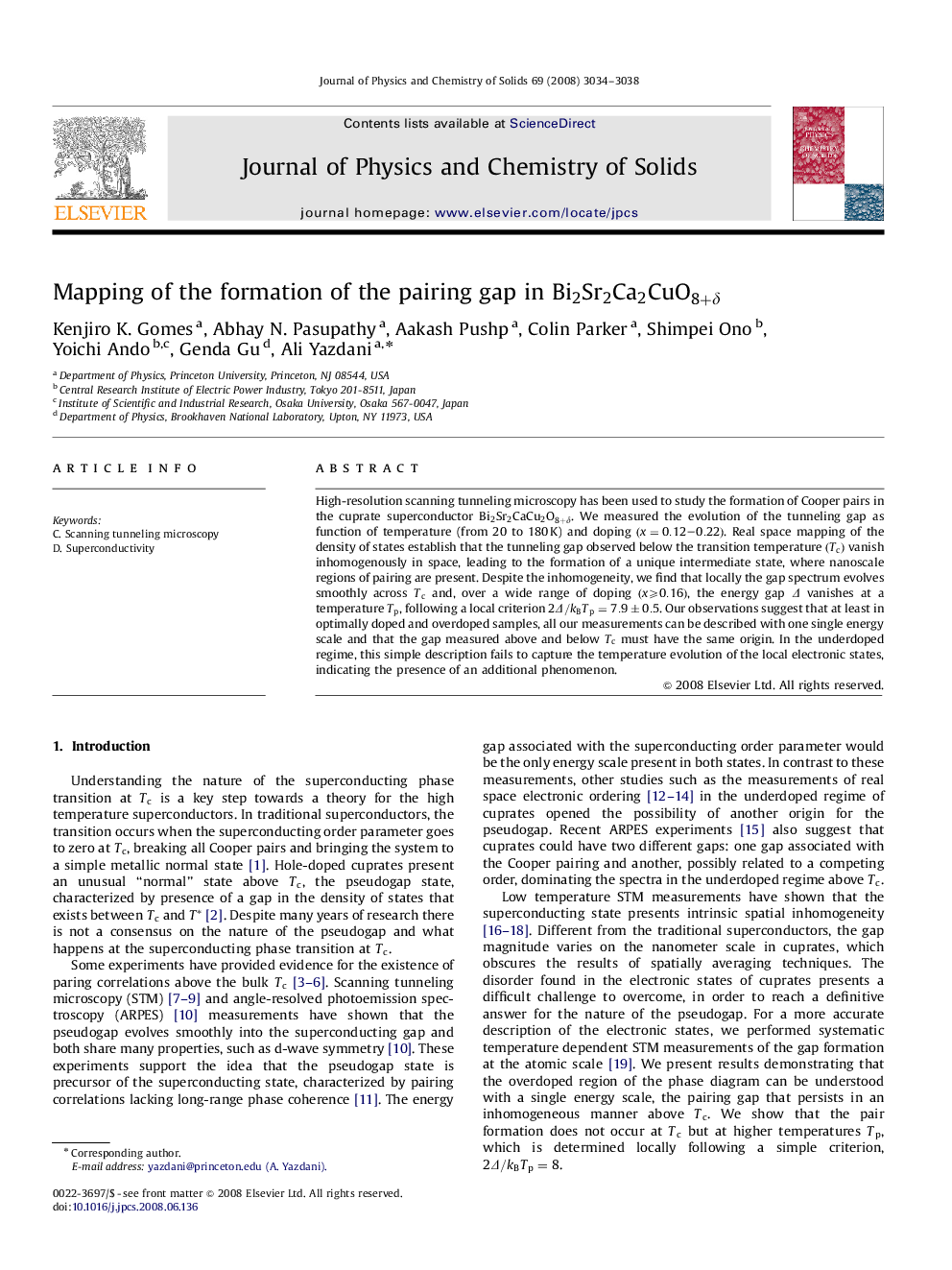| Article ID | Journal | Published Year | Pages | File Type |
|---|---|---|---|---|
| 1518135 | Journal of Physics and Chemistry of Solids | 2008 | 5 Pages |
High-resolution scanning tunneling microscopy has been used to study the formation of Cooper pairs in the cuprate superconductor Bi2Sr2CaCu2O8+δBi2Sr2CaCu2O8+δ. We measured the evolution of the tunneling gap as function of temperature (from 20 to 180 K) and doping (x=0.12–0.22)(x=0.12–0.22). Real space mapping of the density of states establish that the tunneling gap observed below the transition temperature (Tc)(Tc) vanish inhomogenously in space, leading to the formation of a unique intermediate state, where nanoscale regions of pairing are present. Despite the inhomogeneity, we find that locally the gap spectrum evolves smoothly across TcTc and, over a wide range of doping (x⩾0.16)(x⩾0.16), the energy gap ΔΔ vanishes at a temperature TpTp, following a local criterion 2Δ/kBTp=7.9±0.52Δ/kBTp=7.9±0.5. Our observations suggest that at least in optimally doped and overdoped samples, all our measurements can be described with one single energy scale and that the gap measured above and below TcTc must have the same origin. In the underdoped regime, this simple description fails to capture the temperature evolution of the local electronic states, indicating the presence of an additional phenomenon.
